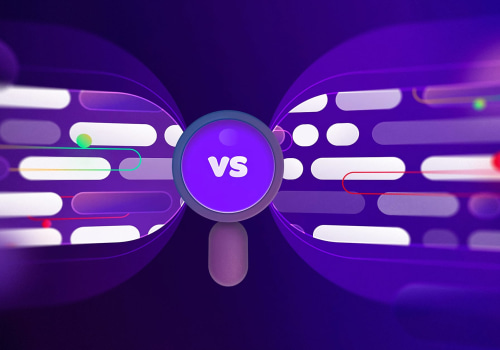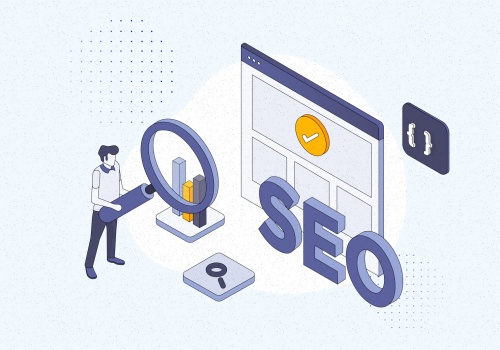Are you looking for the best ways to optimize your content for SEO? If so, you're in the right place. In this article, we'll walk you through the basics of optimizing content for SEO, from understanding search intent to using the right HTML structure. We'll also cover how to ensure your content is relevant to your audience, as well as tips and tricks for improving your content's visibility. By the end of this article, you'll have a better understanding of how to make your content stand out from the competition and get better results from your SEO efforts. The first step to optimizing content for SEO is to understand why it is so important.
Search engine optimization (SEO) helps your content get found by search engines like Google, Bing, and Yahoo. This means that potential readers have a much better chance of discovering your content, which leads to higher traffic and more engagement. To optimize your content for SEO, you need to understand the basics of keyword research. Keywords are words or phrases that people type into search engines when they are looking for something specific. By researching and using the right keywords in your content, you can make sure that it will appear in search results when people are looking for it.
Additionally, it's important to use keywords strategically throughout your content so that it reads naturally and isn't stuffed with too many keywords. Another important aspect of optimizing content for SEO is creating compelling titles and meta descriptions. A title should be catchy and accurately reflect what the article is about, while a meta description should be a concise summary that accurately reflects what the article contains. Both titles and meta descriptions are important as they show up in search engine results pages (SERPs) and can help draw readers in. It's also important to include relevant images and videos in your content. Images can help break up text and make it more visually appealing, while videos can provide an interactive experience for readers.
Additionally, make sure to include alt text with all images to make them more accessible and SEO-friendly. Finally, link building is a key part of optimizing content for SEO. Link building involves adding links from other websites or pages back to your own content. This helps improve your search engine rankings as well as send referral traffic back to your site.
Images and Videos
Including images and videos in your content can help you to better optimize it for SEO.Images and videos can help draw attention to your content, helping to improve the overall user experience. Furthermore, search engines are now able to interpret images and videos, making them valuable assets when it comes to SEO. When it comes to images, it's important to include an 'alt' attribute which describes the image. This will help search engines understand what the image is about.
You should also make sure that the file names of your images are descriptive and include relevant keywords. Videos can also be a powerful way to optimize content for SEO. Videos should include a title, a description, and relevant tags. Additionally, you should also include a transcript of the video as this will help search engines understand the content of the video.
Keyword Research
When it comes to optimizing content for SEO, keyword research is an essential part of the process.By researching relevant keywords, you can ensure that your content is optimized to appear in search engine results pages (SERPs) for the right terms. Keyword research helps you to identify the words and phrases that people are searching for when they’re looking for content related to your business or industry. This can help you to create content that is more likely to be found by potential customers and increase your visibility online. When doing keyword research, it’s important to focus on keywords that have high search volume and low competition.
This means that there are plenty of people searching for these keywords, but not many websites competing for them. To find the best keywords for your content, you can use a keyword research tool to explore different search terms and find ones that are relevant to your business.
Once you’ve identified the best keywords for your content, you can start using them in your content.
Make sure to use the keywords in titles, headings, subheadings, meta descriptions, and throughout the body of the content.You should also use the keywords naturally in your content without stuffing them in unnaturally or overusing them.
By following these steps and optimizing your content for SEO, you can increase your visibility online and reach more potential customers.
Link Building
Link building is an important part of SEO optimization. It helps to build the authority of your website and improve its search engine rankings. Link building involves creating links from other websites to your own, often through guest blogging, article submissions, directory submissions, and social media sharing.When done correctly, link building can help you create natural, organic traffic to your website. However, it is important to remember that link building should be done with caution and care. You should always make sure that you are linking to reputable websites and that the links you are creating are relevant to the content on your website. It's also important to ensure that the link building process is done in a natural way.
This means that the links should come from a variety of sources, not just one or two. You should also avoid buying links from other websites as this can lead to a penalty from search engines. Lastly, you should also monitor your link building efforts over time to ensure that they are effective and to make adjustments if necessary. This will help you get the most out of your link building efforts and make sure that your website continues to rank well in search engine results.
Titles and Meta Descriptions
Titles and meta descriptions are essential elements of SEO optimization, as they help search engines to understand the content of a webpage.Titles are the words that appear at the top of your webpage, while meta descriptions provide a brief summary of what the page is about. Both titles and meta descriptions should be written with SEO in mind, as they are key factors in determining how your webpages rank on search engine results pages (SERPs).When creating titles and meta descriptions, it's important to include relevant keywords. This will help search engine algorithms to understand what the page is about, and determine whether it is relevant to the user's search query. It's also important to keep titles and meta descriptions concise and to-the-point; research suggests that short titles and meta descriptions perform better than long ones.
Additionally, make sure that the title accurately describes what the page is about. Finally, it's important to include a call to action in your title or meta description. This can be something like "Learn more" or "Get started". This encourages users to click through to your website and increases your chances of ranking higher on SERPs. Optimizing content for SEO requires a combination of keyword research, creating SEO-friendly titles and meta descriptions, using images and videos to boost engagement, and link building. By following these best practices, you can ensure that your content reaches its full potential and drives traffic to your website.
Keep these tips in mind and you'll be well on your way to creating SEO-friendly content!.






